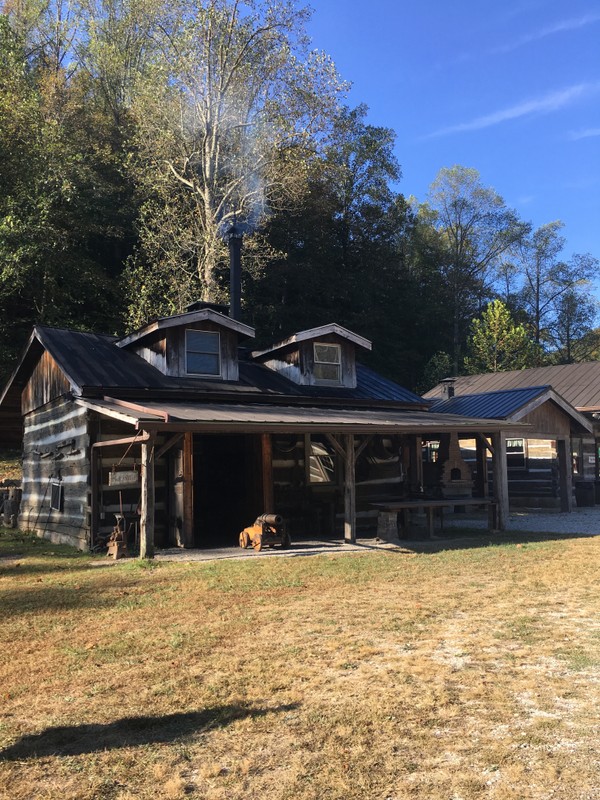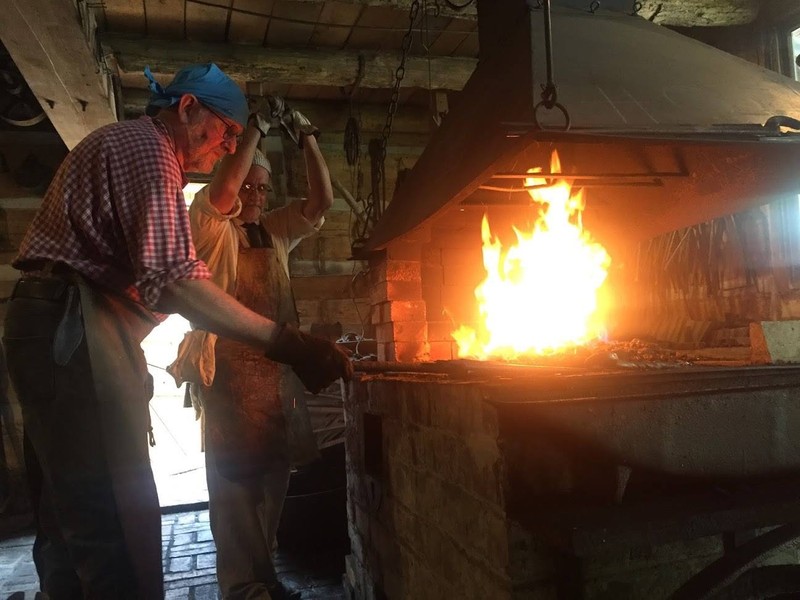Blacksmith Forge
Introduction
Author-Uploaded Audio
Charlie Bradley talks about the importance of blacksmith forges
Text-to-speech Audio
Images
The Blacksmith forge is open for demonstrations several days a week in the spring, summer, and fall.

The Heritage Farm Blacksmith forge is roughly modeled on a mid-1800s forge, although some items date as late as the early 1900s.

Blacksmiths have to use furnaces to produce 2000-3000 degrees of heat for shaping metal.

Backstory and Context
Text-to-speech Audio
A typical forge consists of a furnace, which produced a hot fire; a bellow, to blow air onto the flames and make it hotter; tongs to hold and move the metal pieces; and an anvil, a large metal block where the metal pieces were placed while being shaped. Furnaces burned extremely hot, up to 2000 or 3000˚F; pieces of metal placed in a furnace grew so hot that they became soft and easy to shape. Blacksmiths then used tools to hammer, bend, or twist heated metal into different shapes. As it cooled, the metal would become hard again.
Blacksmithing was a very dangerous job, but it was an essential one. Every community needed to have a Blacksmith forge. The average person did not have the knowledge or resources necessary to create their own metal tools. People therefore relied on a skilled Blacksmith to make or repair almost any metal things that they needed. This included nails and screws; axes and hammers; plows, and shovels; barrel and wagon rims; and horseshoes. Blacksmiths and the tools that they created were critical for helping construction, transportation, and farming.
Sources
“Blacksmith.” Colonial Williamsburg. Accessed November 7, 2019. https://www.history.org/almanack/life/trades/tradebla.cfm
“Blacksmith.” Encyclopedia Britannica. August 9, 2018. Accessed November 7, 2019. https://www.britannica.com/topic/Blacksmith.
“The History of Blacksmithing.” Forge Magazine. March 15, 2017. Accessed November 7, 2019. https://www.forgemag.com/articles/84597-the-history-of-Blacksmithing.
“History of Blacksmithing.” Oldfield Forge. Accessed November 7, 2019. https://www.oldfieldforge.co.uk/history-of-Blacksmithing/.
Kauffman, Henry J. “The Tools and Trade Techniques of the Blacksmith.” Medieval Technology and American History – Pennsylvania State University. Accessed November 7, 2019. https://www.engr.psu.edu/mtah/articles/techniques_Blacksmith.htm
Images courtesy of Heritage Farm Museum & Village.
